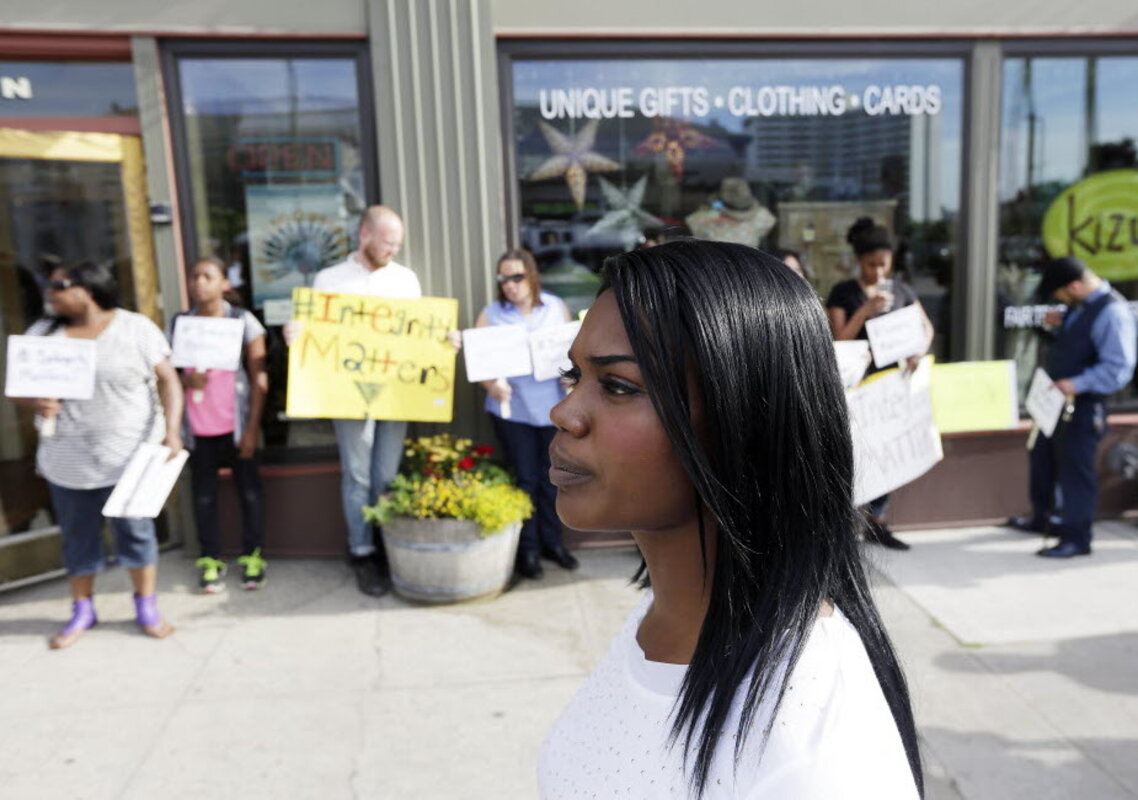As Rachel Dolezal resigns, a renewed US debate on what it means to be black
Loading...
| New York
When Mark Naison became one of the first white professors in the budding field of African-American studies 45 years ago, some of his black peers disapproved, he says. Others were willing to give him a chance, saying, “OK, he’s here. Let’s see what he does.”
“I’m a white guy who is part of the black community,” says Professor Naison, who has taught at Fordham University in New York since 1970. “I’m somebody who found this place in the black community as an openly white person, who embraces the study of black history, and who has a feeling, an emotional attachment to a lot of black culture.”
So in some respects, Naison can relate to the story of Rachel Dolezal, the former president of the Spokane, Wash., chapter of the National Association for the Advancement of Colored People (NAACP), who resigned on Monday after a national furor erupted over her racial identity. Ms. Dolezal’s parents outed the social justice activist and part-time African-American studies professor, saying their ethnically white daughter has repeatedly misrepresented her racial background – and even the identity of her father and other family members.
“I feel bad for her, and I feel like she did something really stupid,” Naison says. “I try to get white people to be anti-racist activists, but not by renouncing their whiteness and becoming black, but by renouncing their racism and privilege. She did neither. She took a shortcut.”
Indeed, the Dolezal saga has touched a raw cultural nerve. Beyond her alleged deceptions, her story has evoked questions about the malleability of racial and cultural identity. And it’s renewed the debate about what it means to be black in America.
“We understand that identity is not something that is intrinsic or essential, but it is something that is constructed,” says Clarence Lang, professor of African and African-American studies at the University of Kansas in Lawrence. “This doesn't mean that identity or race is arbitrary,” he says, “but race certainly isn’t about biology, because we know that if you try to define race that way, it ultimately falls apart.”
The controversy surrounding Dolezal comes amid another national discussion about identity, as Caitlyn Jenner has made a public transition from a man to a woman over the past few months.
Some conservatives have been contrasting Ms. Jenner’s “brave” story with Dolezal’s surreptitious transformation from a white girl to a black woman, seeing contradiction and irony as scorn continues to be heaped on the civil rights leader.
“Just last week the President of the United States congratulated Bruce Jenner on his courageous decision to pretend to be a woman, and the entire left bursting into spasms of ecstasy over a collectively insane decision to ratify the notion that men can magically become women,”. “Today, the entire left is struggling to explain how a white woman who identifies herself as black is not, in fact, black.”
Last week, too, the feminist filmmaker Elinor Burkett asked in The New York Times, expressing ambivalence toward the idea that Jenner, without having “accrued certain experiences” and “endured certain indignities,” could simply call herself a woman.
In Dolezal’s resignation letter, posted to the , she said that “challenging the construct of race is at the core of evolving human consciousness.” She did not, however, address her parents’ accusations that she has been lying or explain why she told her peers and employer that she was at least partially black.
But even if race is indeed a social construct, there are nevertheless experiences that define being black in America, says Professor Lang, echoing the arguments of Ms. Burkett.
“If the argument is going to be that race is arbitrary, and we can really choose whatever subjectivity we want, and that subjectivity that we choose ought to be accepted and legitimated, then we would still have to explain [all the social disparities] in black people’s experience,” Lang says. “I don’t know how Trayvon Martin, Michael Brown, Freddie Gray identified themselves racially, but we know that sociologically, they were African-American.”
American history is full of other instances where race and identity came into play. Hundreds of thousands of black people intentionally sought to live as white people – a phenomenon called “passing” and an attempt to attain the cultural privileges of being white.
And with the notorious “one drop” rule, even people who were white in every way could be legally considered black if there was even a trace of black ancestry.
Yet the “godfather of rhythm and blues,” the bandleader Johnny Otis, was one example of a white person who famously re-identified as a black man in the 1940s and ’50s. “As a kid, I decided that if our society dictated that one had to be black or white, I would be black.”
“But the difference is, he didn’t lie about it,” says Naison. “He was totally transparent about what he did and why he did it, and he was totally accepted.”
Naison’s formative experience happened when he was a senior in college back in the 1960s. “My family was not so complicated like Dolezal’s,” he says. “When I fell in love with a black woman, I was simply kicked out of my family and adopted by hers.”
“But I didn’t become black,” he says. “I became the white guy living in a black family, and teaching in a black studies department.”





